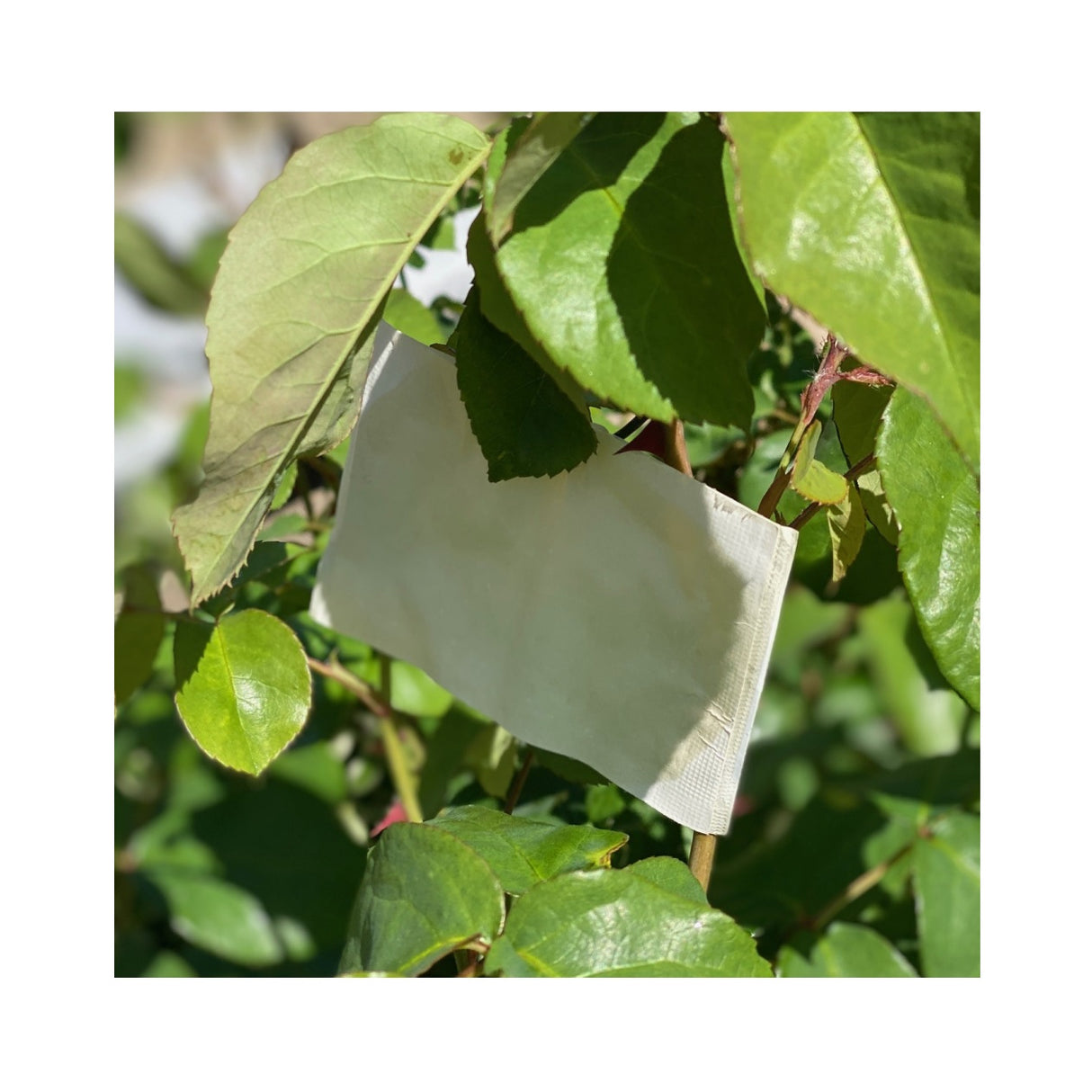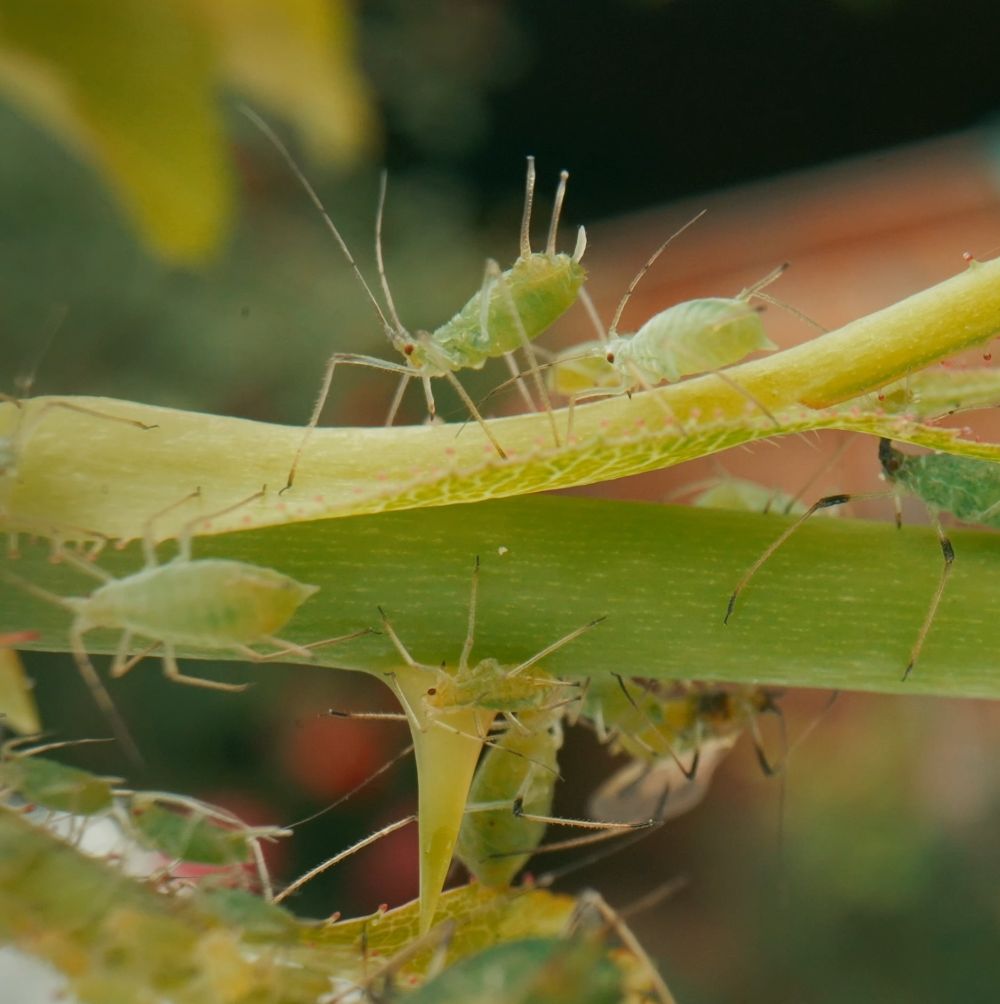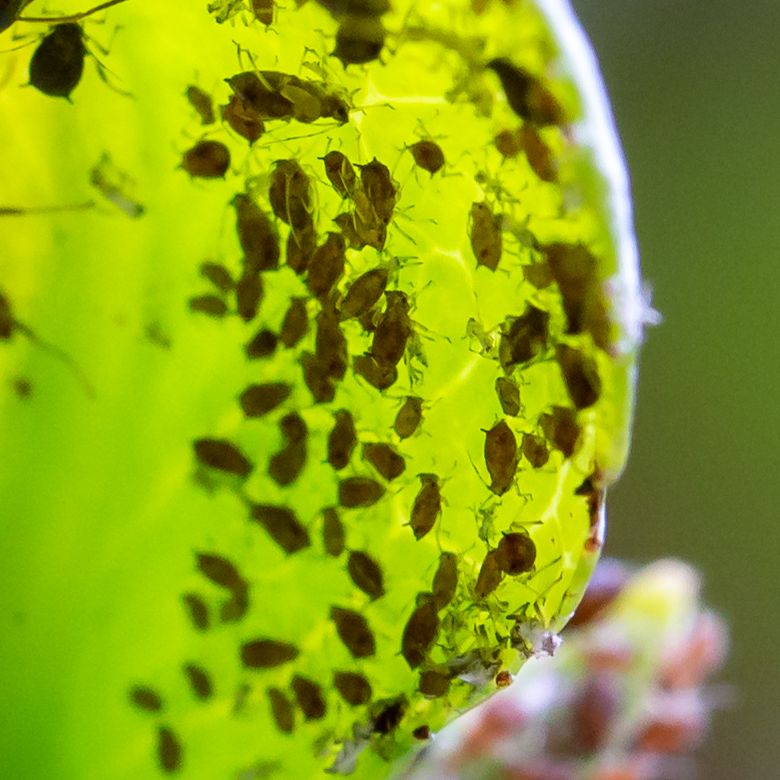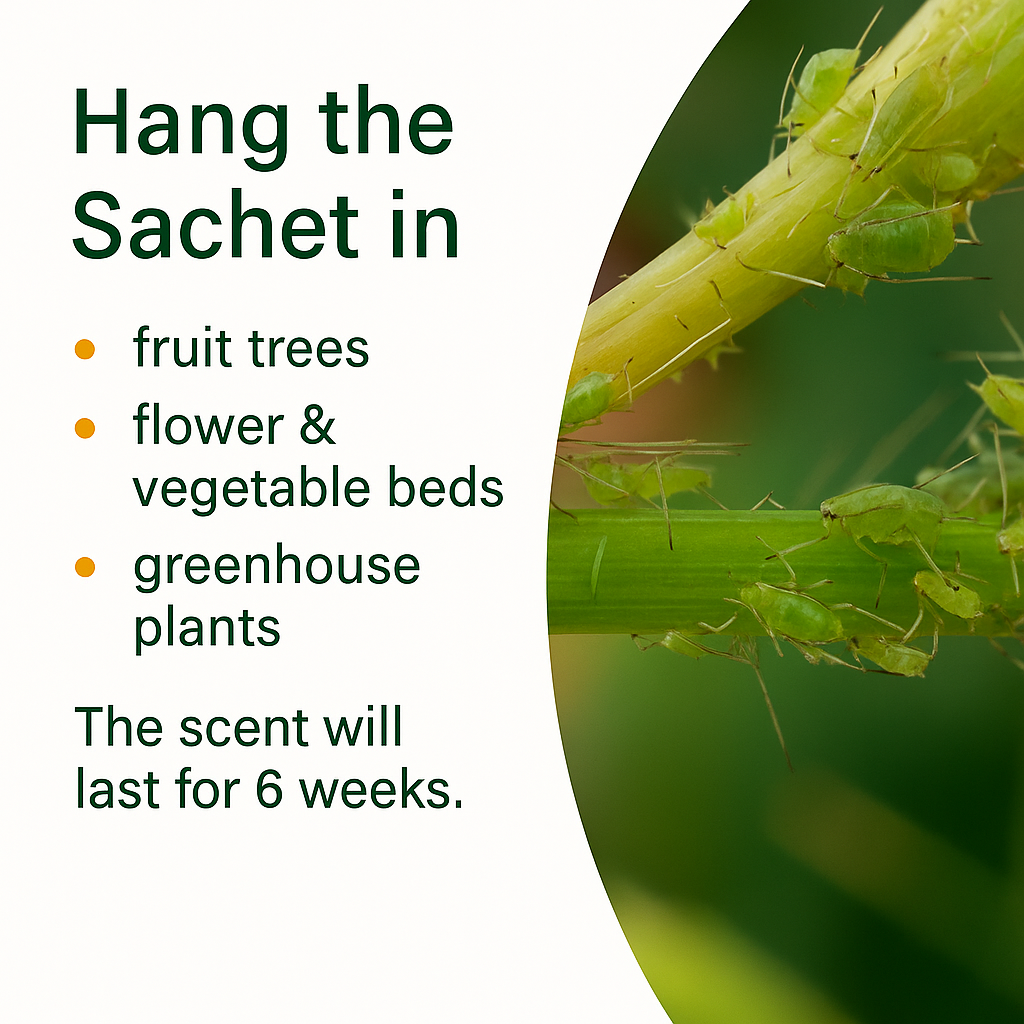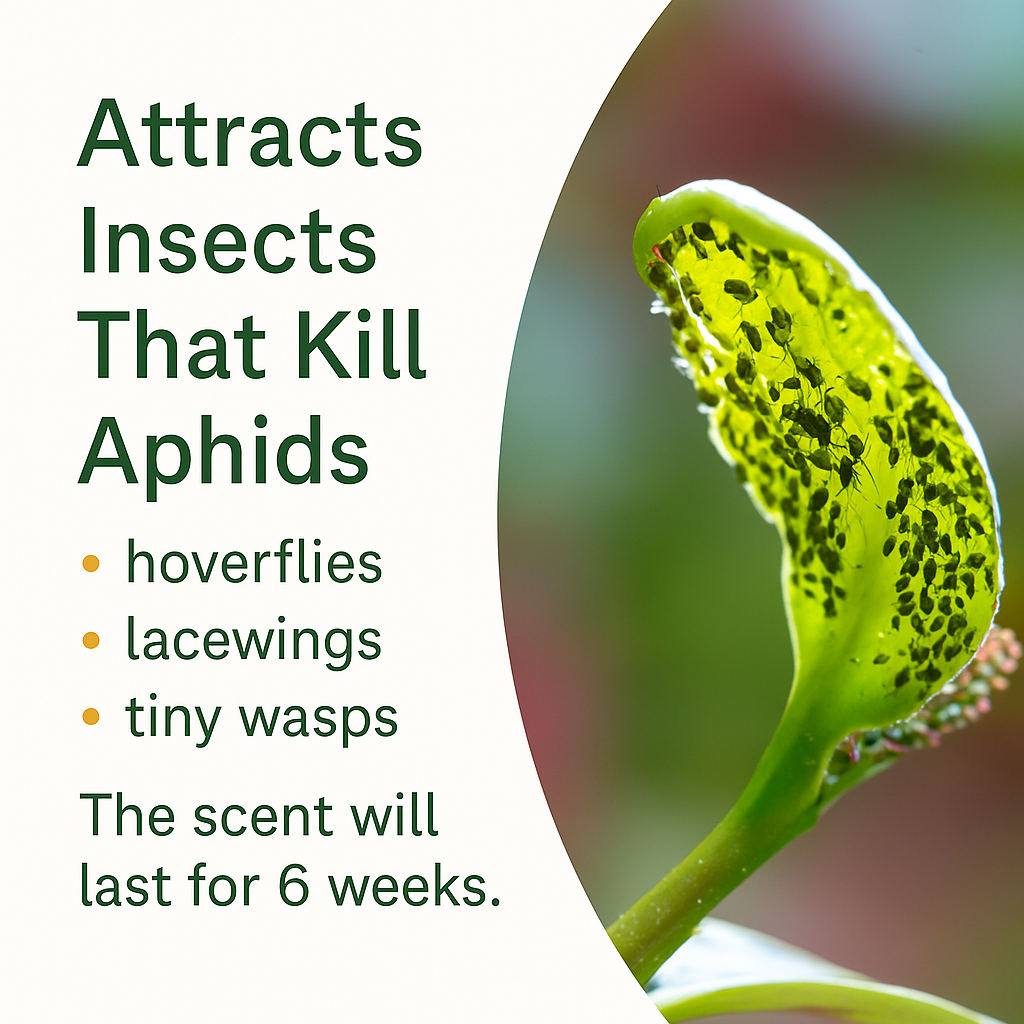Aphid Predator Attractant Beneficial Insect Attractant
Aphid Predator Attractant Beneficial Insect Attractant is backordered and will ship as soon as it is back in stock.
This bait sachet is a natural attractant that brings in beneficial insects which feed on aphids. It contains a special blend of scents that plants naturally release when attacked, helping draw in predators that target common garden pests.
- Encourages lacewings, hoverflies and tiny wasps that feed on pests
- Useful in fruit trees, vegetable beds, flowers, and greenhouses
- No sprays or chemicals needed – just hang and let nature do the work
- Easy to use with hanging tie included
- Supports pollinators and other good insects
How To Use The Aphid Predator Attractant
The sachet releases scent for up to six weeks, depending on weather. Hang it in trees, on plant stems, or near flowers and shrubs. Use the included tie to secure it above the plants you want to protect.
Best Time To Hang Sachets to Attract Garden Insects
Start using early in the season (March or April) to prevent problems before they build up. Continue through the season to keep infestations low.
Beneficial Insects Attracted
Lacewings
Prey: Aphids (main target), whiteflies, mealybugs, spider mites, thrips, small caterpillars and insect eggs.
Predatory stage: Larvae are the main feeders (nicknamed "aphid lions"). Adults often feed on nectar and pollen, with some also hunting pests.
Hoverflies
Prey (larvae only): Aphids, scale insects, small caterpillars, and occasionally thrips.
Predatory stage: Larvae feed on pests, while adults feed on nectar and pollen, making them excellent pollinators.
Anthocorid Bugs (Minute Pirate Bugs)
Prey: Thrips, aphids, whiteflies, spider mites, insect eggs, and small caterpillars.
Predatory stage: Both nymphs and adults are fast-moving, aggressive predators.
Parasitic Wasps
Prey/hosts: Aphids, whiteflies, caterpillars, leaf miners, mealybugs and other insect larvae.
How they work: Females lay eggs inside or on pests. The larva feeds on the host insect, eventually killing it. These wasps are highly specific and used in targeted biocontrol.
Product Details
Each sachet contains 3ml of concentrated attractant, supplied with a green hanging tie. Designed for outdoor use in gardens, greenhouses, fruit trees, and flower borders where aphids are common. Store below 15°C, away from direct heat and sunlight. Shelf life is up to 24 months when kept in the original packaging.
Questions and Answers
Q: Why are ants protecting aphids in my garden?
A: Ants collect honeydew from aphids and defend them against predators, allowing aphid populations to grow.
Q: What’s the best way to reduce aphids on roses?
A: Hang a sachet nearby to attract lacewings and hoverflies. Block ant access so predators can feed freely.
Q: How can I stop ants climbing my fruit trees?
A: Use glue bands or tree wraps to stop ants reaching aphids on the trunk.
Q: Can I use this method in my greenhouse?
A: Yes. Hang sachets above aphid-prone areas to draw in helpful insects. Works well in enclosed conditions.
Q: How long does each sachet last?
A: Up to six weeks, depending on conditions. Replace regularly during peak aphid activity.
